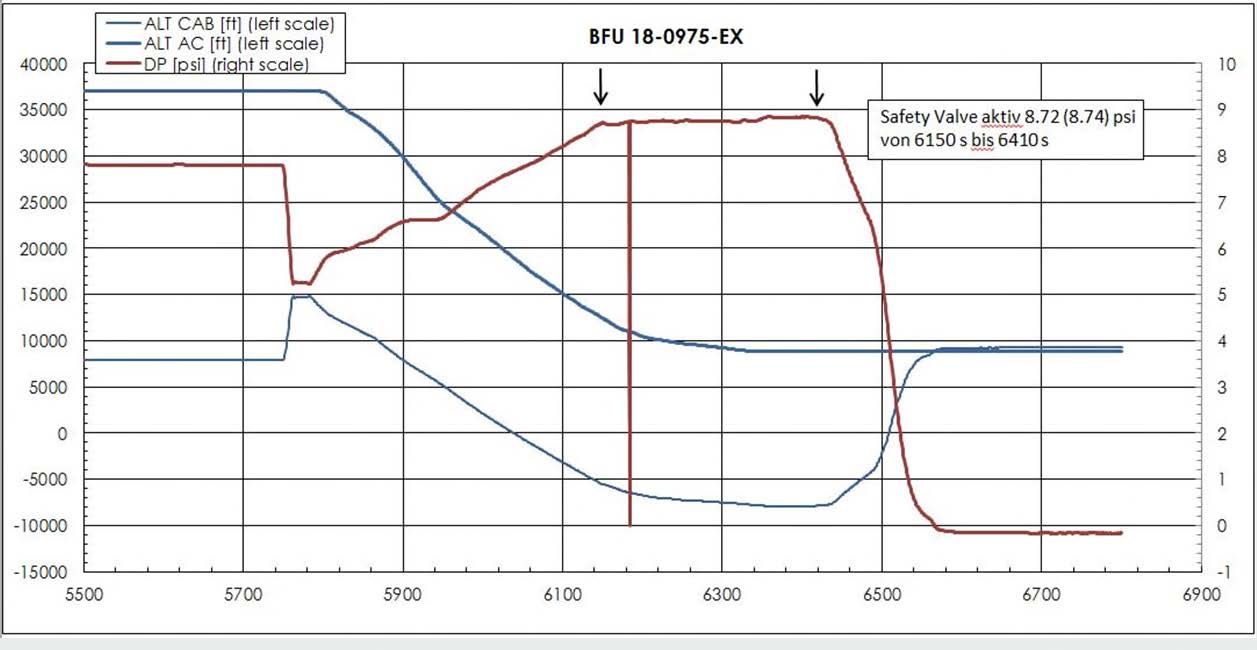 EI-ENM 737-800 Depressurisation
EI-ENM 737-800 Depressurisation
Home > Accident News > EI-ENM
Contents
On 13 July 2018, a 737-800 EI-ENM (35038/3528), Delivered Jan 2011, was cruising at FL370 when a rapid decompression in the cabin occurred due to miscalculation of one of the Cabin Pressure Controllers (CPC) which resulted in the opening of the Outflow Valve (OFV).
While the crew conducted an emergency descent with manually closed OFV, the cabin pressure increased to the maximum differential pressure. At 9,000 ft AMSL, the aircraft levelled off and the OFV was opened manually which resulted in a second rapid decompression.
Subsequently, the airplane landed at Frankfurt-Hahn Airport. According to the last statements, 33 persons on board suffered minor injuries due to pressure fluctuation.
The full report is published here
Cause
The occurrence was caused by a fully opened OFV commanded by the ECS during cruise flight at FL 370. The malfunction was caused by a Single Event Upset in one of the Cabin Pressure Controllers. In this case, the system redundancy of the cabin pressure control system was not suf-ficient to prevent rapid decompression.
The following extracts are of particular interest
Single Event Upset
It is highly likely that the cause of the depressurisation was the erroneous opening of the OFV caused by a damaged data record from a "Single Event Upset" (SEU) in the Cabin Pressure Controller. A "Single Event Upset" is is a so-called “soft error” in connection with the function of semiconductor components, which in aerospace are mostly caused by ionising radiation at great altitudes. Charged particles emit energy when passing through semi-conductor components, for example. This may cause the charge distribution in the component to change and may result in a so-called Bitflip (switch of the p-n transition). The results of calculations such a component may process at the time may be affected. The SEU does not cause any damage on the component and does affect it only at the time it occurs.
According to the statement of the aircraft manufacturer, the occurrence probability of SEU is 3.5x10-8 per flight hour, if the worst comes to the worst. This means one occur-rence per 28.4 million flight hours. In addition, they came to the conclusion that 2.7% of all rapid decompression occurrences are the result of CPC malfunctions caused by SEU. Accordingly, the manufacturer reckons with nine more similar occurrences during the expected service life of this entire fleet. Due to the high redundancy in ECS this failure probability corresponds with the valid certification requirements.
As far as the BFU is aware, within the last 10 years three similar occurrences happened where it is highly likely that CPC failures caused by SEU on board of a Boeing 737 occurred. Two of the CPCs involved featured an older software version and the calcu-lation parameters as critical were not identical to the one in the current case. Back then, the manufacturer provided software patches which implemented TMR proce-dures for the relevant parameters.
All of the information, photographs & schematics from this website and much more is now available in a 374 page printed book or in electronic format.
*** Updated 05 Aug 2023 ***


